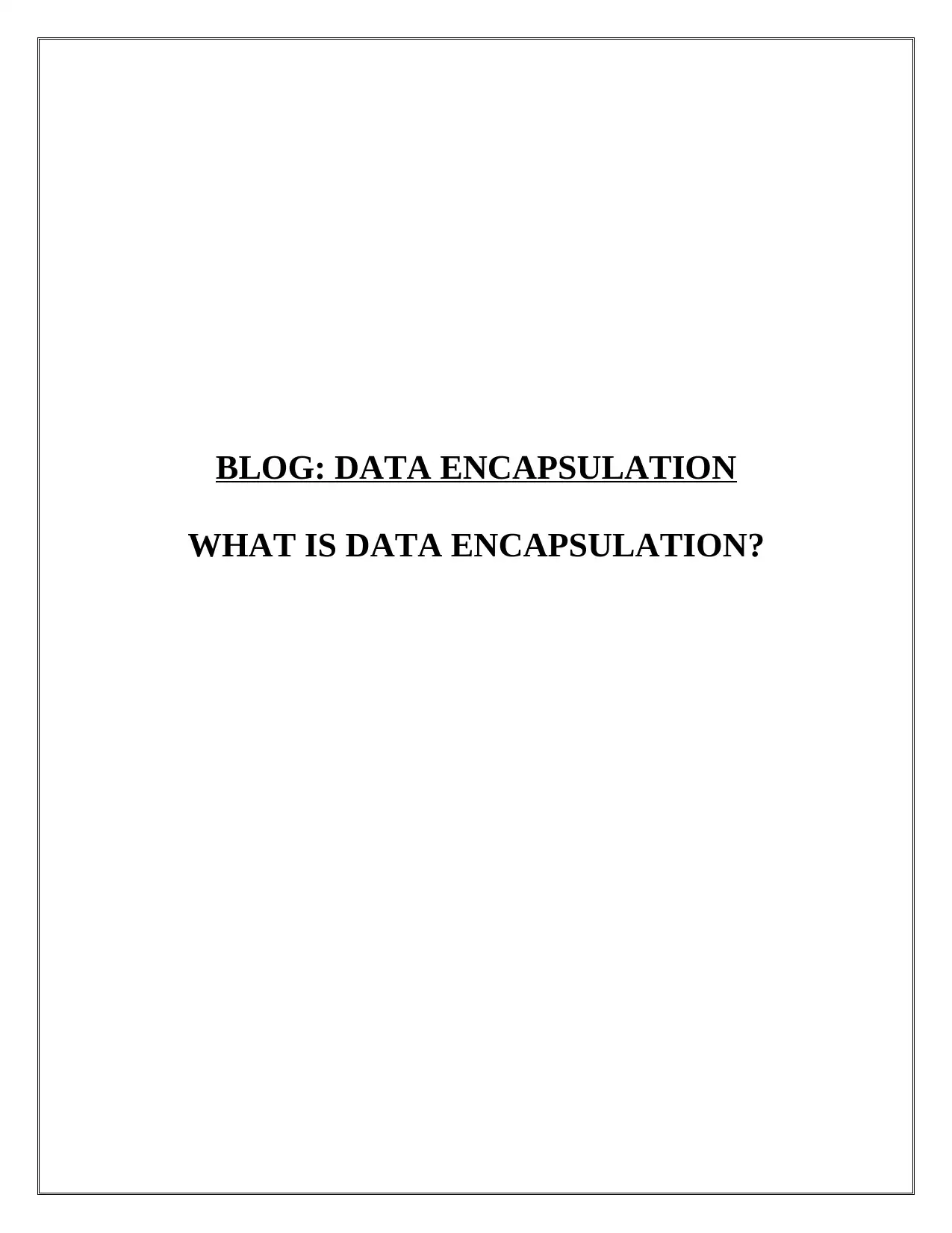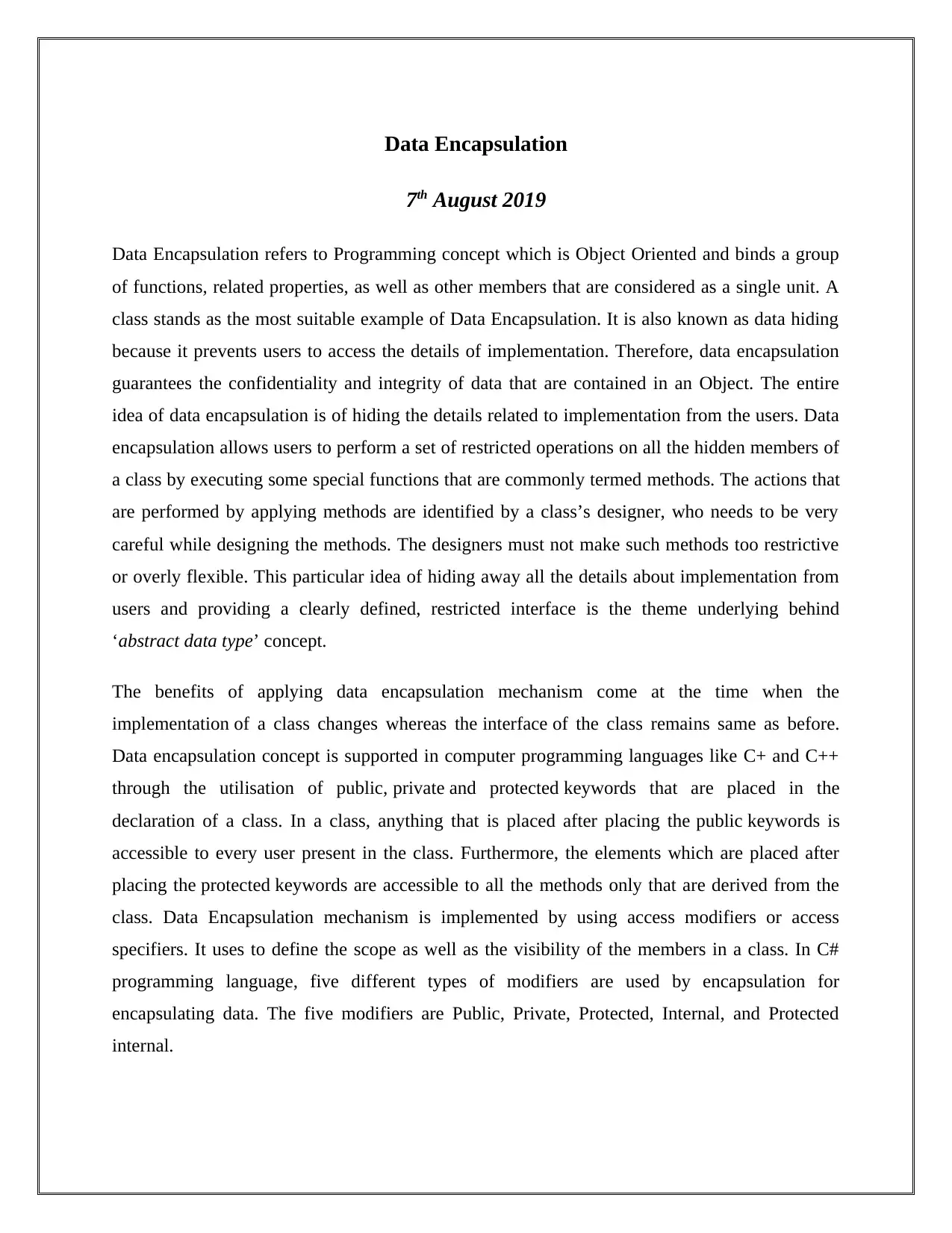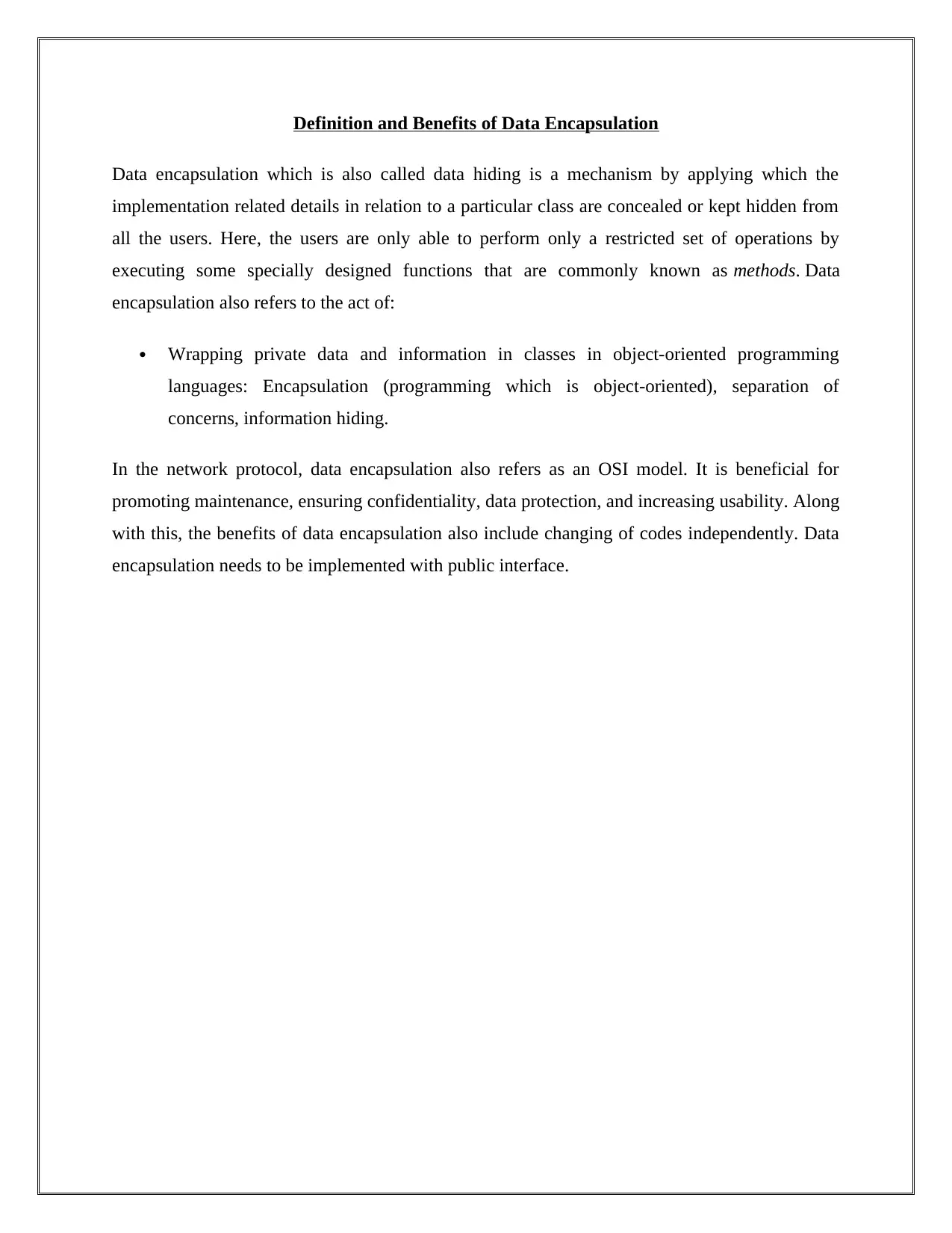Data Encapsulation: A Deep Dive into Object-Oriented Programming
VerifiedAdded on 2019/10/12
|3
|555
|285
Report
AI Summary
This report provides a comprehensive overview of data encapsulation, a fundamental concept in object-oriented programming. It explains the core principles of data encapsulation, which involves bundling data and methods that operate on that data within a single unit, often a class. The report highlights the benefits of encapsulation, such as data hiding, improved code maintainability, and enhanced security. It delves into the practical implementation of encapsulation using access modifiers like public, private, and protected in programming languages such as C++ and C#. The report also explains the role of data encapsulation in promoting the separation of concerns and ensuring the confidentiality and integrity of data. Additionally, it touches upon the application of encapsulation in networking protocols like the OSI model. By providing a clear understanding of data encapsulation, this report aims to equip students with the knowledge necessary to design and implement robust and efficient software systems.
1 out of 3









![[object Object]](/_next/static/media/star-bottom.7253800d.svg)